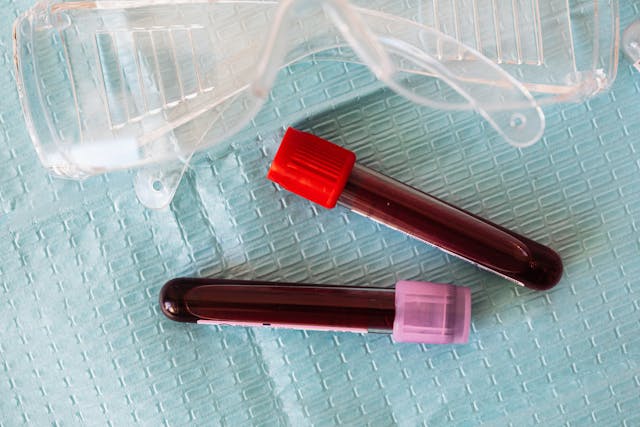
What is hemophilia? Hemophilia is a genetic disorder where a person’s blood doesn’t produce enough clotting factors to clot when the person is injured.
We have probably heard of hemophilia in relation to the royal families of Europe in the 19th century. Probably, most famously, Prince Alexi of the Romanov family. He was the only son of Tsar Nicholas II and was the main reason why Rasputin was able to gain so much power over the Tsar. The reason why so many royals had hemophilia was because of Queen Victoria. Queen Victoria was a carrier of hemophilia, and she passed it on to her five daughters. They were then married into many of the royal families across Europe and passed the gene on, where it became the disease in many male offspring. As we shall see, hemophilia is more common in men than in women.
Hemophilia is a genetic disorder. When we are cut, blood comes out of our veins or arteries. It is more often than not the veins because they carry blood back to the heart and are closer to the surface. Arteries carry blood from the heart, and they are usually deeper. Blood is mostly made of plasma, and that plasma contains platelets and a protein called clotting factor. When the vein or artery is cut, the clotting factor converts another protein in the blood called fibrinogen into very sticky threads called fibrin threads. These threads bind with platelets and form blood clots, which stick over the wound. There are 13 different clotting factors in the plasma, and each one plays a different role in the process. They are all necessary. The clotting factor in our blood plasma is created by genes and hemophiliacs have a mutation on the gene that produces clotting factors VIII and IX. That means that when they start to bleed, their blood cannot clot, and unless they get medical attention, it can be fatal. One of the biggest problems with hemophiliacs is not external injuries because we can see these and get treatment. The problem comes with internal injuries. If a person without hemophilia gets a cut in their intestine, for example, the clotting factors will plug the wound. A hemophiliac might not be able to plug the wound, and there could be internal bleeding.
Hemophilia is passed from the mother to the son because it is a mutation that is carried on the X chromosome. Women have two X chromosomes and men have one X and one Y. If a man and a woman have a daughter, the mother passes one X chromosome to the daughter and the father passes on X chromosome. If they have a son, the mother passes one X chromosome and the father passes the Y chromosome. If the mother has the mutated X chromosome, she will still have one normal X chromosome, and the normal chromosome can make factor VIII and IX. If they have a daughter, there is a 50% chance she will pass that mutated chromosome on, and the daughter will become a carrier. If they have a son, there is a 50% chance she will pass that mutated chromosome on, and the son will become a hemophiliac. Men don’t have another X chromosome, so if they receive a mutated X chromosome, they don’t have a backup one to make factor VIII and IX. A woman can become a hemophiliac if she is unlucky enough to receive mutated X chromosomes from both her father and mother. It can happen, but it is rare.
Up until the 1990s, the life expectancy for someone with hemophilia was not very high. Today, the life expectancy is pretty much the same as a person without hemophilia. This has become possible because scientists worked out how to extract factor VIII and factor IX from blood plasma. Before that, they could give plasma transfusions, but a liter of plasma only has a tiny amount of factor VIII and factor IX. Not nearly enough to make much of a difference to a person with hemophilia. Once scientists worked out how to extract the two factors, they could make plasma transfusions that contained concentrated amounts of factor VIII and factor IX, which made a huge difference to the patients they were treating. The only problem is that the plasma has to come from donations and a liter of plasma doesn’t have much of the two factors. Scientists needed to extract and combine the factor VIII and factor IX from thousands of donated blood plasma to make a successful treatment. Another problem was that before the screening of blood donations for diseases, a large number of hemophiliacs picked up HIV from plasma donations. The reason for this was that to get such large numbers of plasma donations, the US government paid per liter of plasma. And the people who were desperate enough to sell blood plasma for money were often the people who had a larger percentage of diseases than the rest of the population. Today, blood donations are screened, but factor VIII can also be cloned, so not as many donations are necessary. CRISPR, the gene editing technology, could also be a promising solution for hemophilia. And this is what I learned today.
Sources
https://www.cdc.gov/hemophilia/testing/how-hemophilia-is-inherited.html
https://my.clevelandclinic.org/health/diseases/14083-hemophilia
https://www.csl.com/we-are-csl/vita-original-stories/2024/explainer-what-are-blood-clotting-factors
https://en.wikipedia.org/wiki/Haemophilia_in_European_royalty
https://en.wikipedia.org/wiki/Coagulation
https://www.hemophiliafed.org/disease_type/hemophilia-a
https://www.hematology.org/about/history/50-years/hemophilia
Photo by Photo By: Kaboompics.com: https://www.pexels.com/photo/medical-eyeglasses-and-full-of-blood-vials-on-diaper-4230620/
